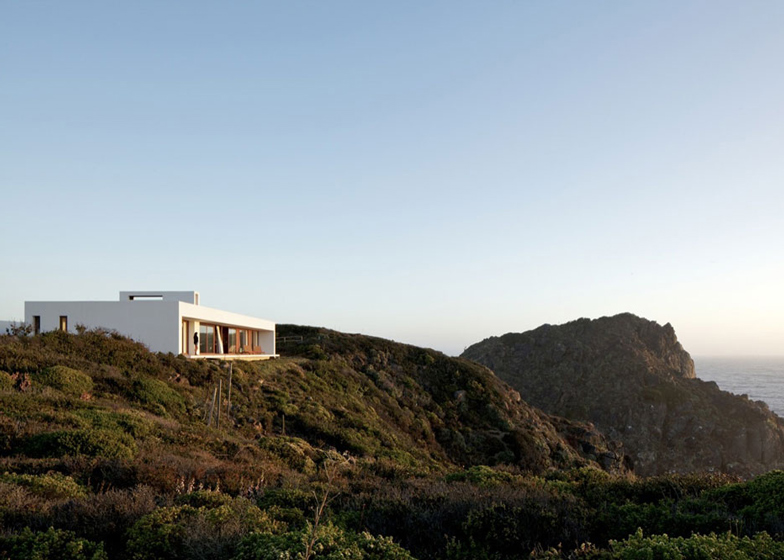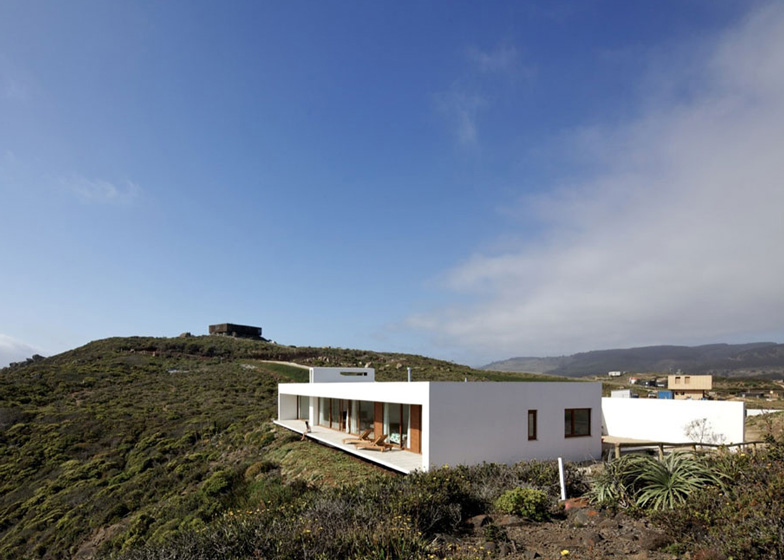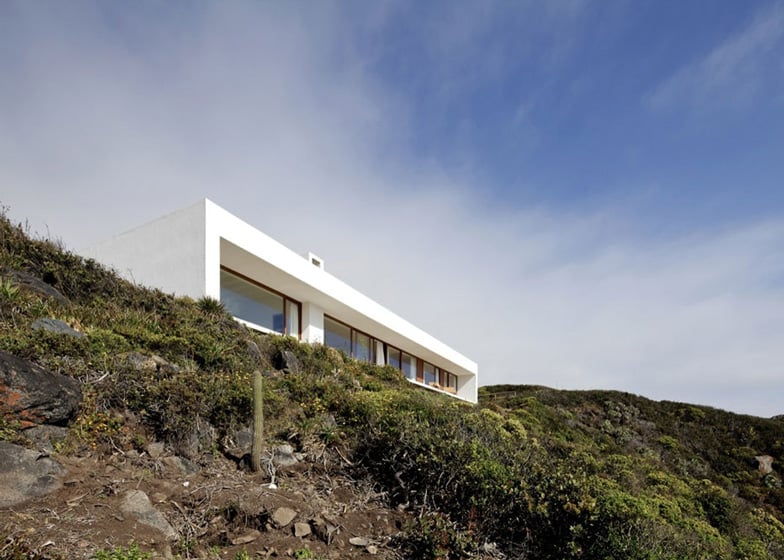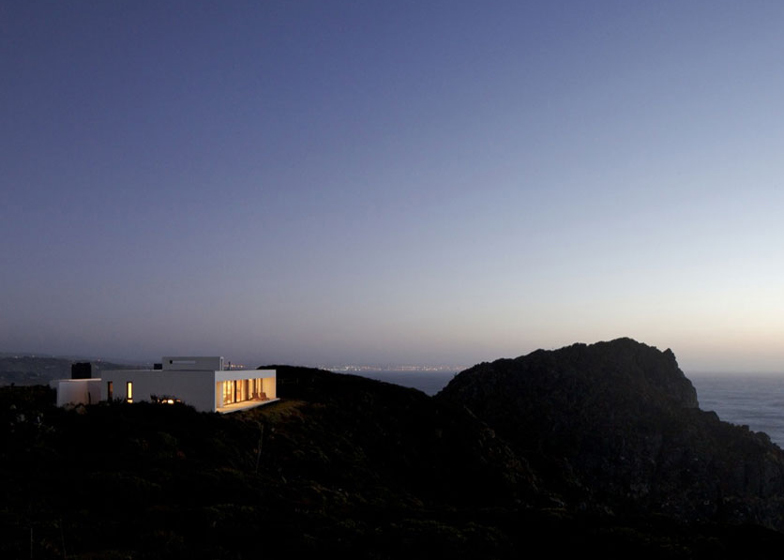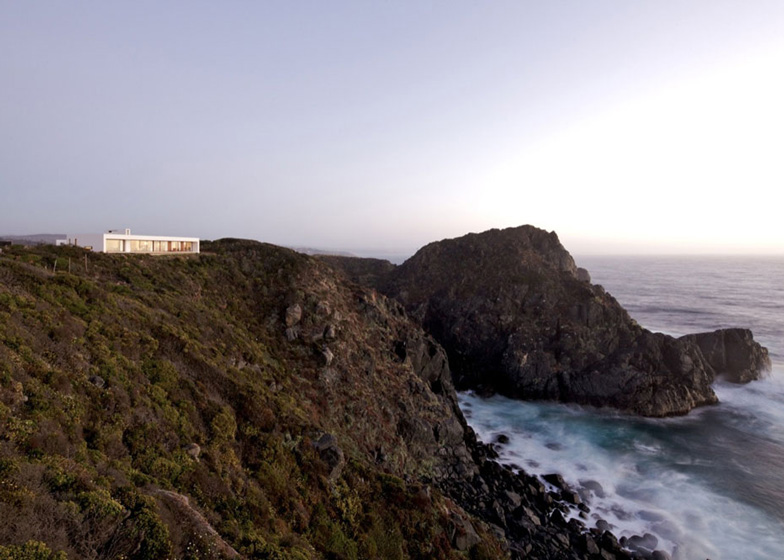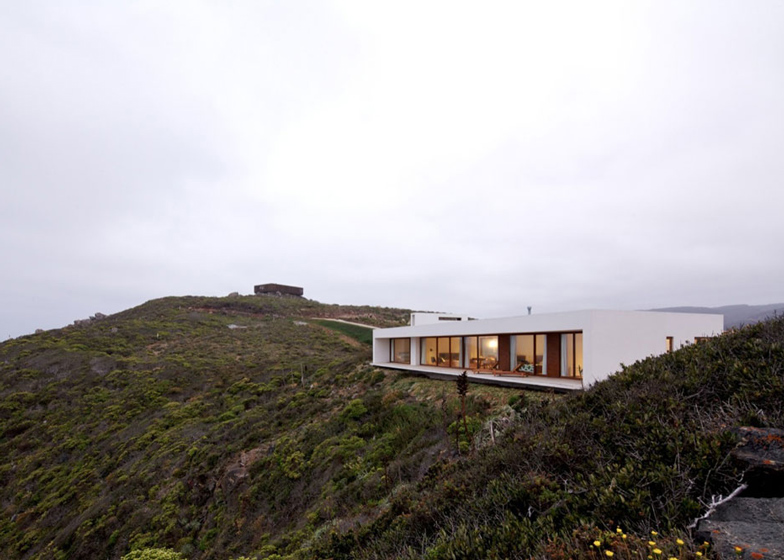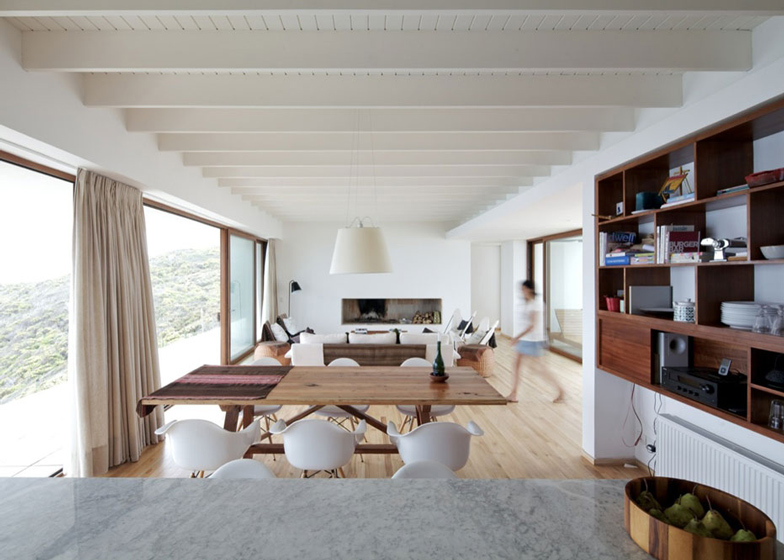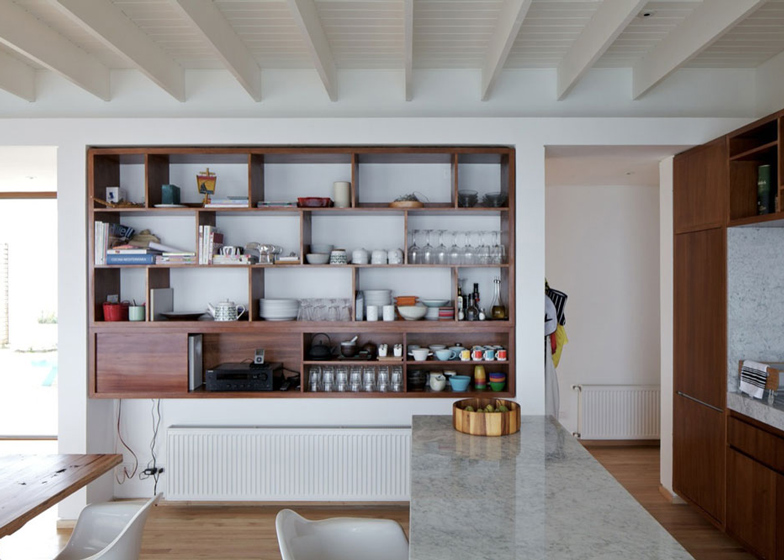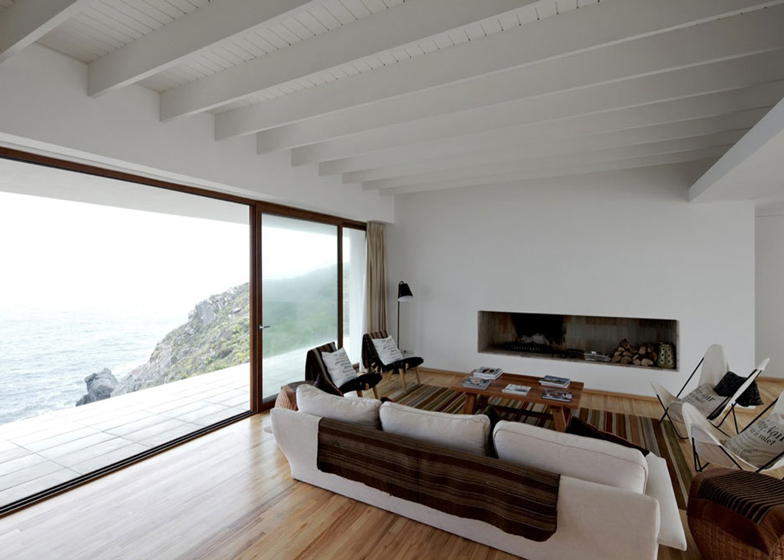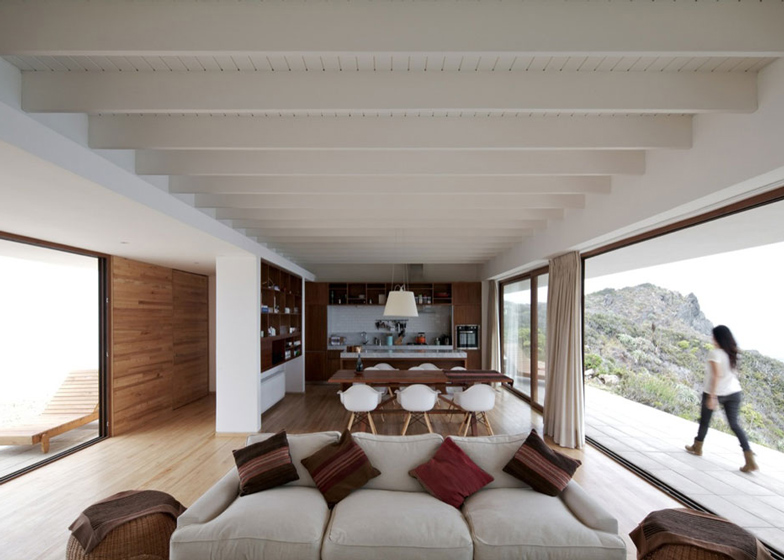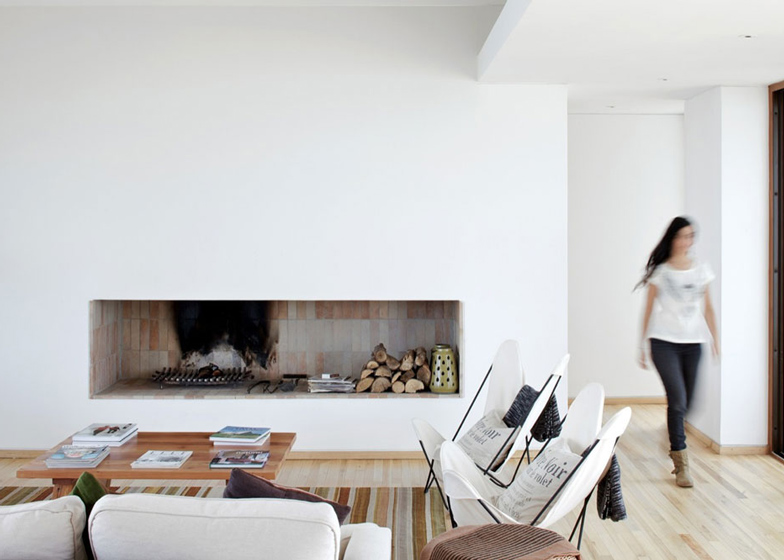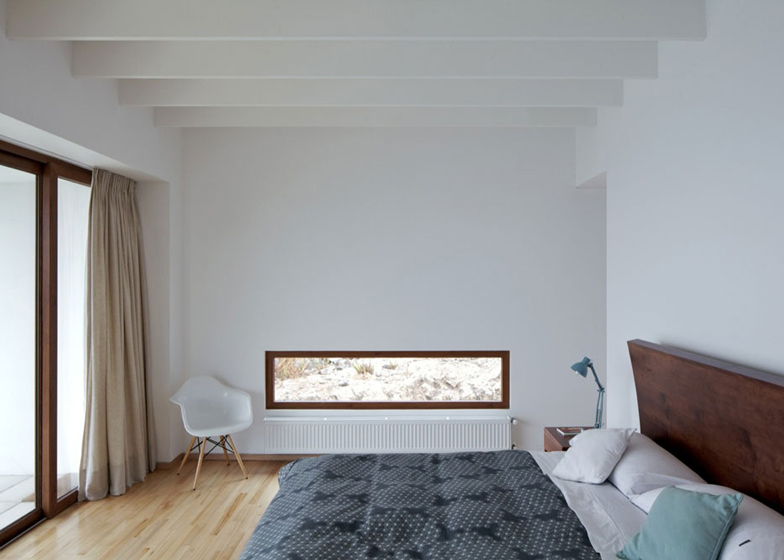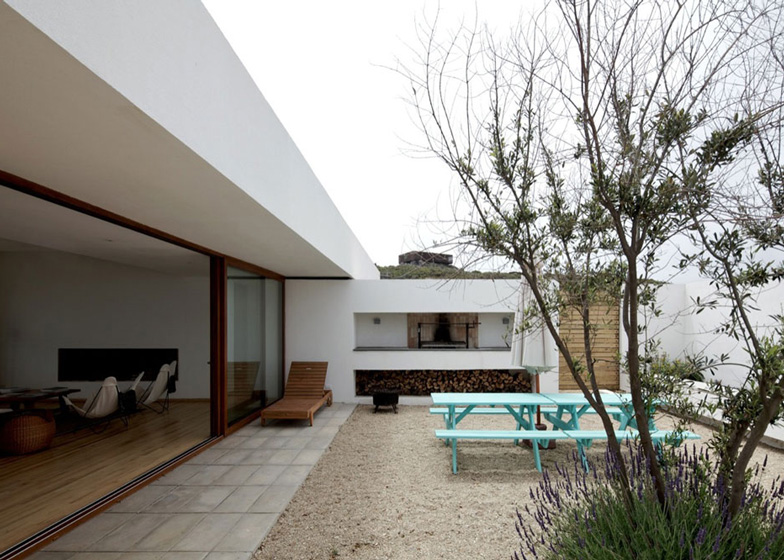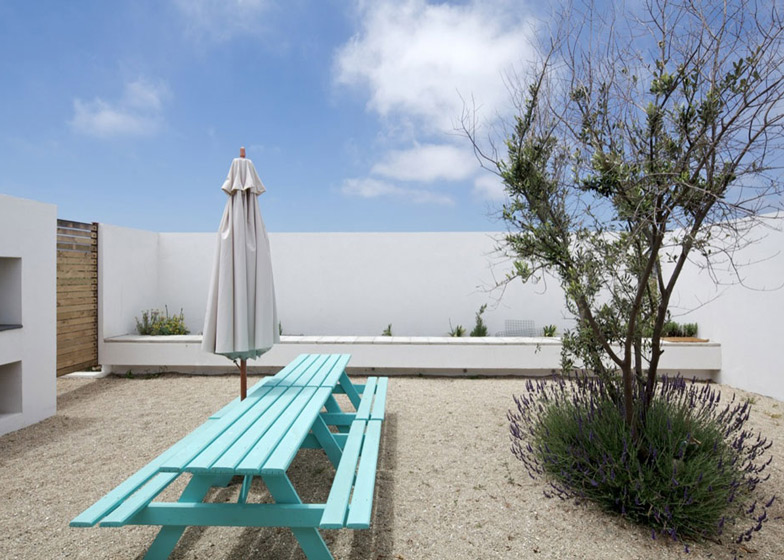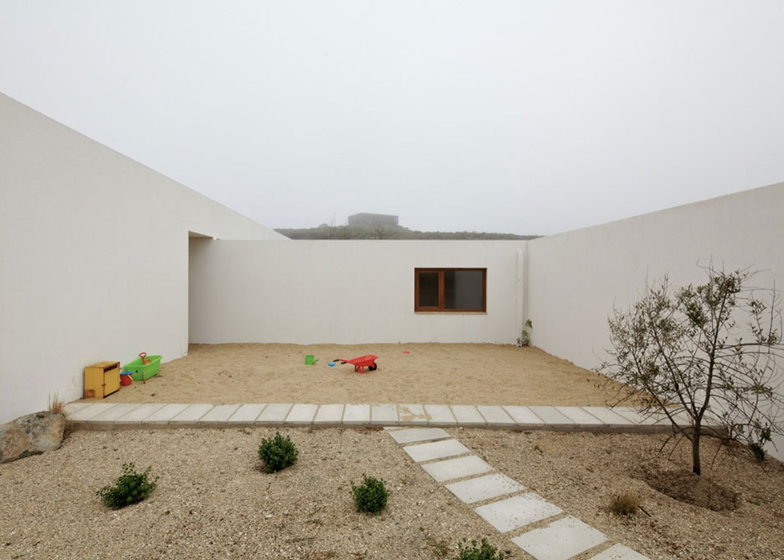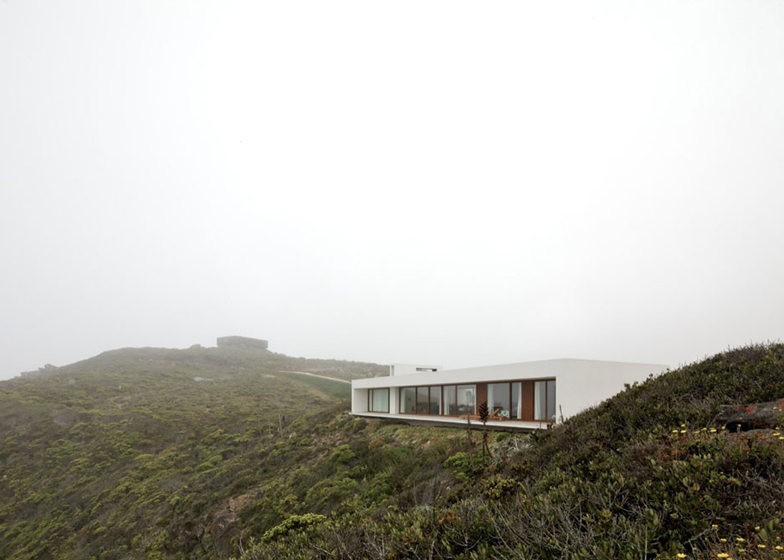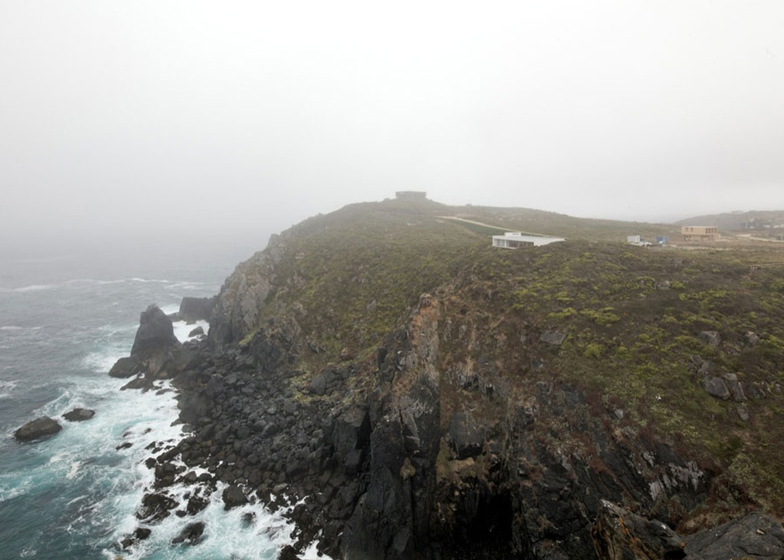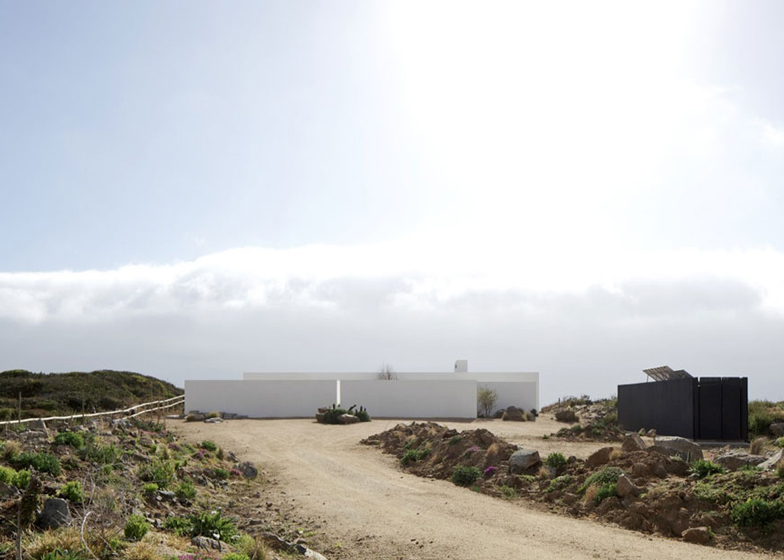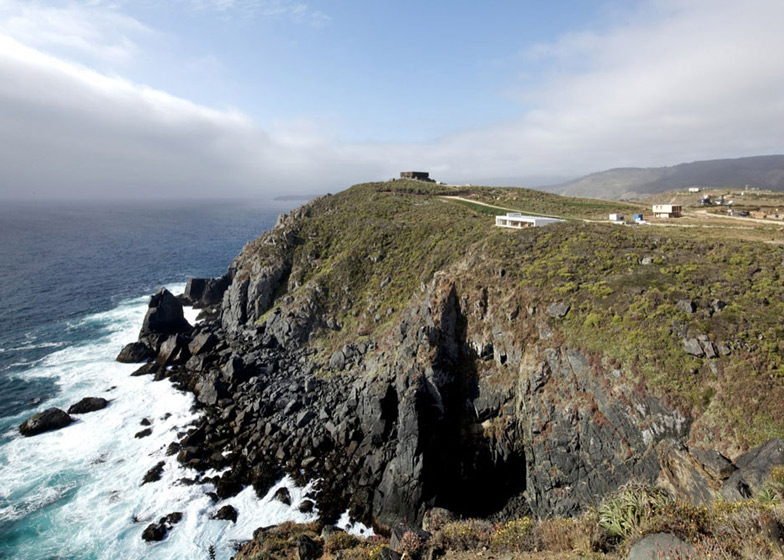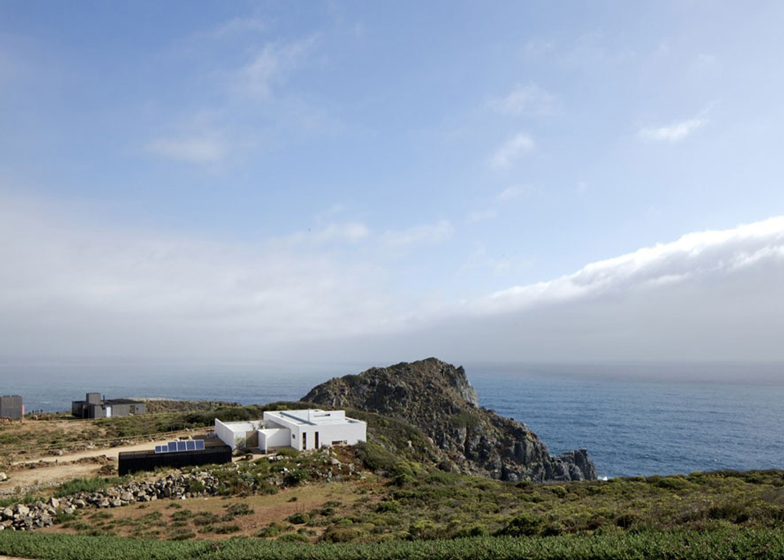Perched on a clifftop along the Chilean shoreline, this idyllic residence by architecture studio L2C forms part of a self-sustaining community that produces its own energy and water, and deals with its own waste (+ slideshow).
L2C's Nicolás Lipthay built the single-storey family residence in Tunquén, a 90-minute drive from Santiago, where an assortment of wooden cabins and concrete houses are dotted across a vast landscape 50 metres above sea level.
"Big and small, all [houses] share the tranquil and simple lifestyle that characterises this unique getaway location," said Lipthay. "The disconnection from mainstream civilisation makes Tunquen an eco-friendly self-sustainable community."
Tunquen House is situated on the edge of the coastline, so its plan is arranged to offer wide-stretching views of the Pacific Ocean from most rooms but also to ensure courtyard spaces are protected from the strong prevailing winds.
"The climatic conditions of the area, dominated by a powerful south wind, conditioned the design," said the architect.
Concrete walls surround the building and are rendered white both inside and out, while the roof is supported by a series of visible wooden joists that have been painted white to match.
A combined living room, dining area and kitchen forms the centre of the plan. Glazed walls run along two sides of the space to open it out to a sea-facing terrace on one side and an entrance courtyard on the other.
The master bedroom sits beside the living room and features a private bathroom and a walk-in dressing room.
Childrens' rooms and guest bedrooms are positioned on the opposite side of the building and lead out to a second courtyard.
A separate outbuilding sits off to one side, accommodating solar panels, water tanks, sewage treatment and recycling facilities.
Photography is by Nicolás Saieh.
Here's a project description from Nicolás Lipthay Allen:
Tunquen House
Quiet, peaceful and with astonishing views of the Pacific Ocean, lies Tunquén, a group of a few hundred houses scattered over hills, cliffs and shore, overlooking the rugged Chilean coast, only an hour and a half away from the capital city Santiago.
An enormous fair sanded beach - as well as beautiful small secluded ones - a protected wetland and the proximity to quaint fishing villages and the coastal town of Algarrobo, make Tunquén an ideal spot.
A variety of architectural styles are found in this area, ranging from charming wooden cabins to grand sophisticated concrete houses. Big and small, all share the tranquil and simple lifestyle that characterises this unique getaway location. The disconnection from mainstream civilisation makes Tunquen an eco-friendly self-sustainable community. All of the houses count with solar power, water tanks and individual sewage treatment systems, and recycling is an important concern of the neighbours.
Tunquen House, located 160 km from the city of Santiago, is on the first line of the waterfront on a cliff over 50 meters above sea level. The house sits on the oceanfront in a contemplative and respectful manner, as a frame for nature and the environment. It is defined as a single volume of white concrete which is divided into three areas.
The main area houses the living room, dining and kitchen, leaving at one end the master bedroom and its services, and at the other the bedrooms for children and guests. This way, the house can set two scales of use, the first is when the owners are at the house by themselves, and the second is when they are there with the kids or guests.
The climatic conditions of the area, dominated by a powerful south wind, conditioned the design. Attached to the living area is a courtyard that has multiple functions, the most important is to be outside sheltered from the wind, in connection with the view and the interior of the house. This same courtyard provides the access, an outdoor dining area and garden.
The structure of the house is made up of a "bracket" of reinforced concrete which along with the fireplace and the walls of the exterior courtyards shape the projected volume, the roof is based on beams and wood, giving texture and greater height to the spaces.

